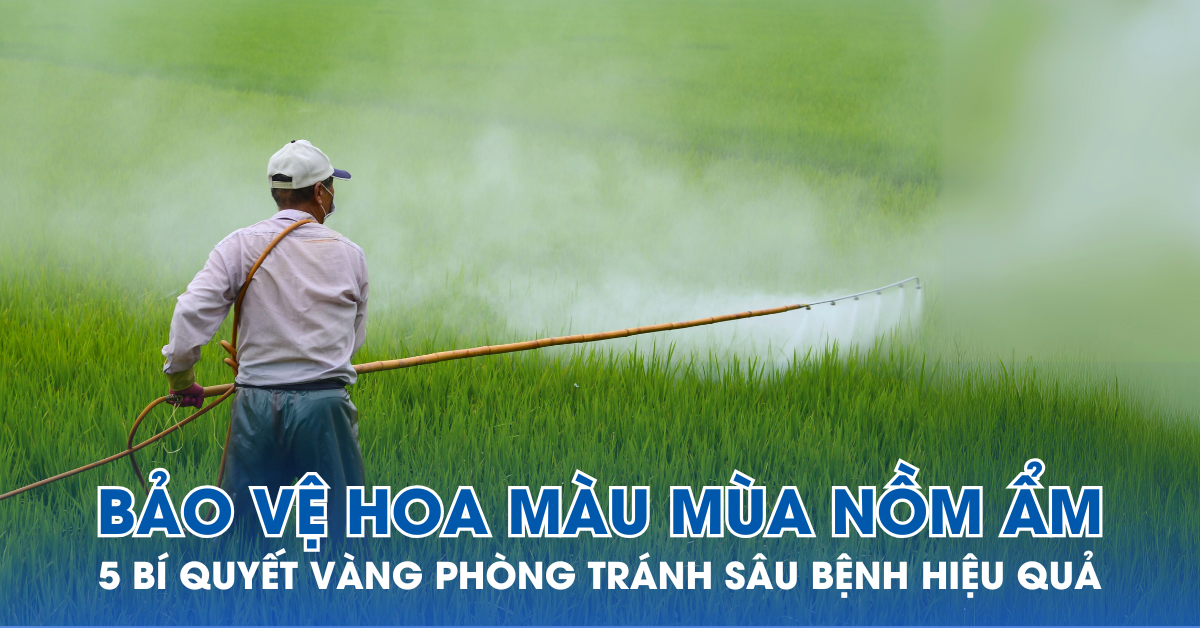Agricultural Weather: Preventing Plant Diseases During Prolonged Humid Conditions In Northern Vietnam
31 Mar 2025

Prolonged humid weather in Northern Vietnam creates ideal conditions for pest outbreaks. Apply these preventive measures now to protect your crops and ensure high yields.
Humid weather – The perfect environment for pests to thrive
In recent days, prolonged humid weather in Northern Vietnam has led to high humidity levels, creating favorable conditions for pests and diseases to attack vegetables. Common diseases such as downy mildew, damping-off, and aphid infestations can cause widespread crop damage if not controlled in time. So how can farmers help their crops survive the humid season while still ensuring healthy growth? Let's explore the most effective methods below.
Pests and diseases arise and attack vegetables. Source: Baconco
Using nylon covers for protection
In vegetable farming areas, many farmers have adopted nylon cover structures to protect their crops from adverse weather conditions. This method can reduce pest and disease rates by up to 50%, while preserving crop yields after heavy rains or cold spells, ensuring high farming efficiency.
These nylon covers are typically made from curved bamboo or reeds, standing 0.8 - 1 meter high, with the edges of the nylon placed 25 - 30 cm from the bed edges. This setup prevents rain from damaging leaves and reduces fungal infections from soil splashes. This method has been widely applied in Hải Dương and many vegetable-growing regions in other neighboring provinces.
Using nylon covers to protect crops from adverse weather conditions. Source: Baconco
Proper fertilization for stronger plants
Applying fertilizer correctly not only promotes healthy plant growth but also enhances resistance to humid weather. During prolonged moisture periods, farmers should prioritize fertilizers like phosphorus, potassium, and micronutrients to strengthen plant structure. Using potassium sulfate instead of potassium chloride helps plants absorb nutrients more effectively and prevents root rot.
Additionally, super phosphorus should be replaced with ultra-phosphorus fertilizers for faster absorption and stronger plant development. One crucial tip is to avoid excessive nitrogen fertilization, as it can make plants softer and more susceptible to diseases.
Maintaining a well-ventilated field, a simple yet effective solution
Field sanitation is one of the most important measures to reduce pest risks. When vegetables are grown at an appropriate density with good airflow, aphids are less likely to appear, and fungal diseases struggle to spread. Farmers should regularly weed, trim old leaves, and ensure proper ventilation in their fields.
A useful tip is to perform field maintenance when plant leaves are dry to prevent bacteria from entering through open wounds. If humidity levels remain too high, farmers should spray preventive fungicides immediately after trimming to protect the crops.
Key precautions when caring for crops in humid weather
During prolonged humid conditions, farmers should avoid common mistakes such as applying urea nitrogen alone or overusing plant growth stimulants (NAA, GA3). While these substances may promote rapid growth, they weaken plant structures, increase disease susceptibility, and lead to quick decay. Uncontrolled use of growth stimulants can also have negative effects on consumer health.
Humid weather can significantly increase pest and disease risks for crops, but with the right preventive measures, farmers can effectively protect their plants. Combining nylon cover structures, proper fertilization, maintaining ventilation, and using pesticides efficiently will help crops thrive, minimize pest damage, and ensure both yield and quality.
Views
716
